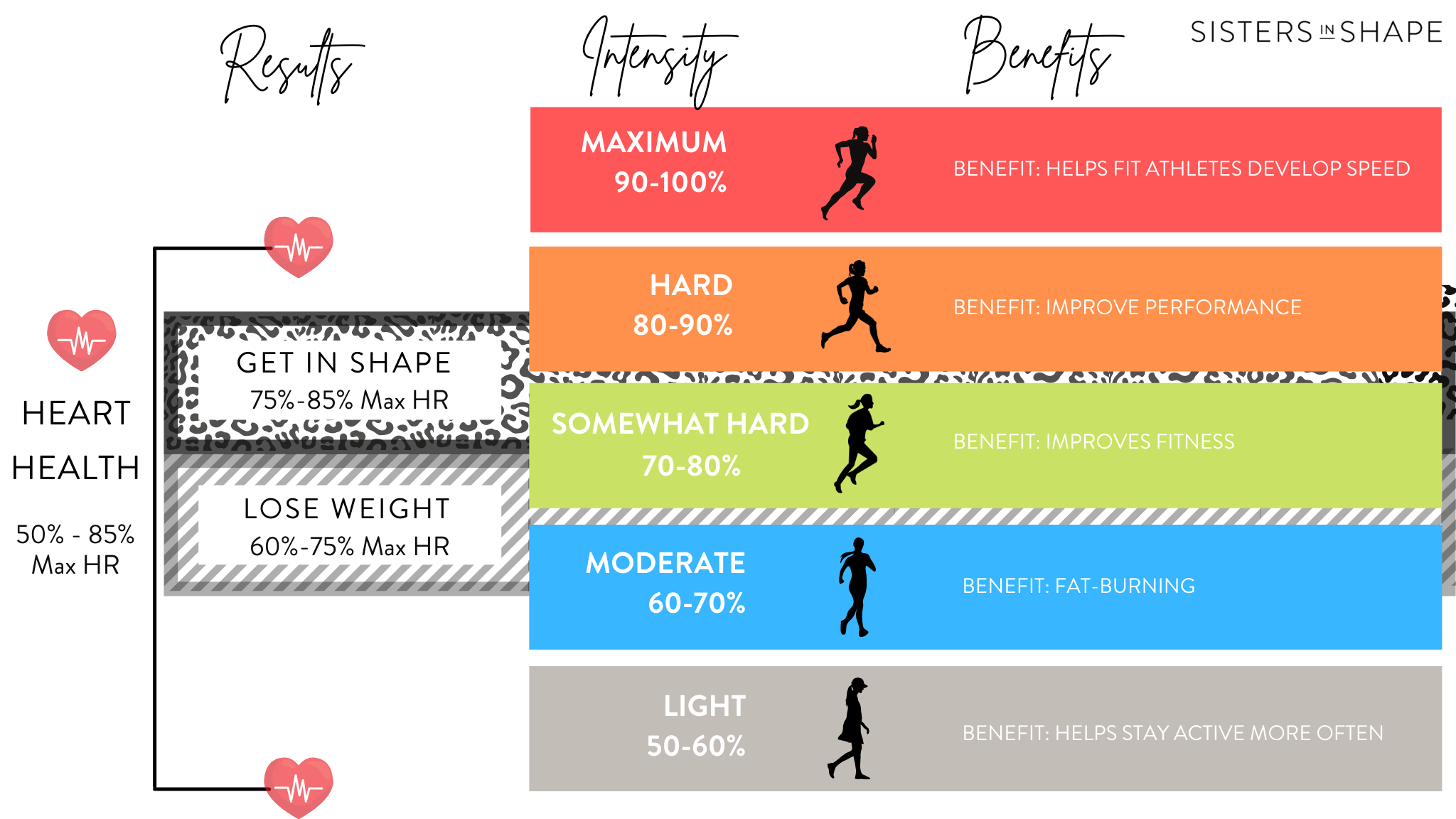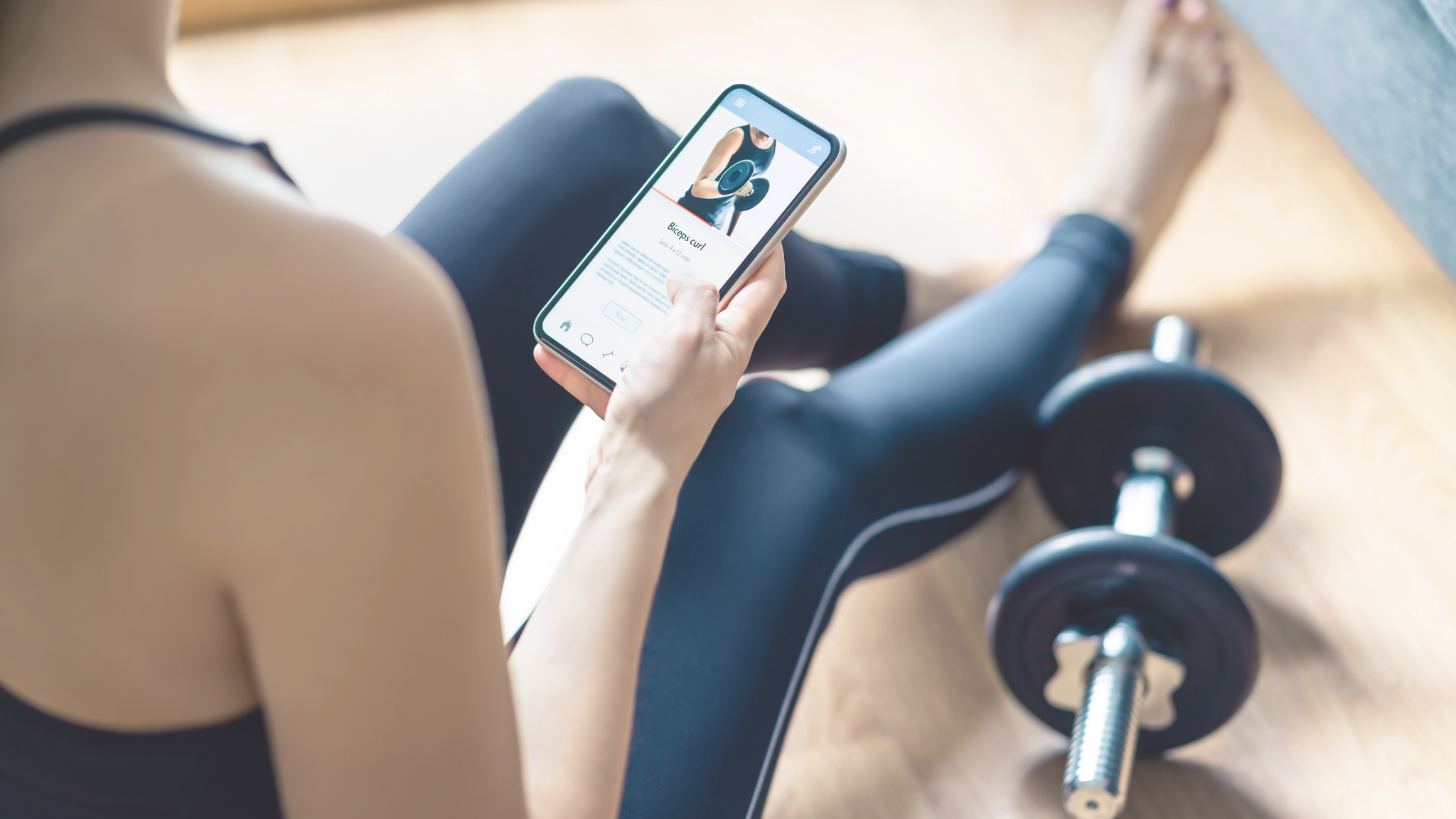How to Use Your FitBit / iWatch to Lose Fat and Get In Better Shape
Fitness trackers are more popular with women than men according to new research, led by Apple and FitBit the wearables market has doubled since last year.
But if you’re like many of my working women clients, then chances are you’ve got a wearable but you’re not using it much beyond as a step counter or what the fitness app spits out to you as “good” or not.
That’s like having a designer pair of shoes (Louboutins, yes please!) collecting dust in your closet OR if you do put on your Jimmy-Choos allowing your shoes to take you where they want to go. 🤦🏽♀️
In our recent podcast episode on fitness trackers, we spoke about the “Best & Worst Ways to Use Your FitBit/iWatch”.
In this blog post, you’ll learn how to actually get better results when you exercise with your wearable.
Stop Using Calories Burned Data (Please!)
Reason 1: Your Wearable Is Probably Wrong
Studies have found that popular activity trackers like FitBit and iWatch may overestimate calorie burn by 40-93%. Yikes! This means that if you’re relying on the calories burned to help you calculate your deficit for weight-loss it’s likely inaccurate to the point of wasting your time.
Reason 2: Focusing On Calorie Burn May Lead to Diet Compensation
Have you ever completed a tough workout or week of exercise and thought later, “I’ve earned a piece of cake/fries/chips.” Don’t be ashamed - I’ve done it too.
Instead, forget about calorie-burn and instead focus on the OTHER health benefits of exercise such as having more energy, feeling strong and aging well. And of course feeling sexy in your own skin you amazing woman! 🐆
Reason 3: Sets You Up For An Unhealthy Relationship with Food + Exercise
This one is huge… Food is energy and nourishment for your body. Period. Exercise is necessary for physical health. Period. Pitting your food intake against exercise expenditure is a slippery slope and can set you up for an unhealthy relationship with food and exercise.
You already know both nutrition and exercise are important - leave it at that.
Why Exercising with Heart Rate Ranges Helps Get You Better Results
The intensity of your workout matters for getting the results you want. And heart rate ranges, expressed as a percentage of your maximum heart rate are one of the best ways to gauge your intensity.
The good news is you already have the tool you need to get better results right on your wrist!
To make your workouts effective, you should aim to get your intensity up to an intentional level (and keep it there) during your workouts. Note the bold + underline of the word ‘intentional’ as that was done intentionally ;)
Intentional intensity is key and does NOT always mean higher intensity. There are lower intensity heart rate ranges which are more beneficial for fat-burning if that’s your goal.
The truth is higher intensity is not always better 🤯… despite what all the sweat-dripping hype in fitness marketing would have you believe.
Different heart rate ranges have different potential benefits for your body and if you’re like most of my working women clients, you’re most interested how heart range ranges can help you lose weight and get in better shape:
For Fat Burning/Weight Loss:
During cardio: 60%-75% of your maximum heart rate for minimum 35 minutes. These are activities like brisk walks with your doggie, cycling, jogging, virtual fitness classes etc.
During resistance training aka dumbbells, resistance bands etc.: 60%-75% of your maximum heart rate
BUT focus more on your form and progression in your lifts than heart-rate for the best fat burning/weight loss results. This is because developing lean muscle helps you burn fat long after your workout is done (yay! #efficient).
And if you’re like most of my clients, then you care about feeling great in your skin and clothes more than a certain number on the scale. Resistance training shapes and tones your body which achieves a slimmer look especially as you age.
To Get In Better Shape:
Cardio pushes aka HIIT, intervals, bootcamps etc.: 75%-85% for 15-30minutes with recovery periods throughout.
During resistance training: Focus completely 💯 on form, mind-to-muscle connection and progression. Heart rate not a helpful metric during these sessions. Instead track weight lifted, number of reps done and perceived level of difficulty for you.
And, Importantly for Heart Health:
All the ranges! (50%-85%) for a minimum of 150 minutes per week.
If you’re like me, you don’t just want an amazing shape you want to be healthy too!
Let’s simplify all that data in a chart…
Fat Burning Zone (Weight Loss) = 60%-75% of Maximum HR
One way to use heart rate ranges is for fat loss, specifically by optimizing the amount of fat your body is using as fuel. Contrary to what you may think, the optimal fat-burning zone is a relatively low intensity — specifically, 65%-75% percent of your Maximum Heart Rate.
This is the zone where your body is primarily using fat as a fuel source, rather than carbohydrates. Once you creep above that 75 percent, your body starts using carbs.
“Due to flawed logic, people often overtrain during cardio bouts, hoping to burn fat quickly by pushing themselves as hard as possible. ”
Due to flawed logic, people often train too hard during their cardio bouts, hoping to burn fat quickly by pushing themselves as hard as possible. If fat-loss is your goal, bring the intensity down and increase the length of working time.
This means longer, lower intensity workouts are better for fat burning.
That said, if your like most of my busy working women clients then you’re not interested in longer workouts, so the good news is 30-45 minutes is a good minimum length for the fat burning range which is the length most of my busy working women clients find doable.
And the even better news is that a brisk walk with your doggie 🐶 or kiddos can easily get you into this zone, just ensure that you’re getting up an intensity that is 60-75% of your maximum heart rate by taking a peek at your watch.
How to Calculate YOUR Heart Rate Ranges to Burn Fat & Get In Shape
The first step is to calculate your personal heart rate ranges. Since it’s dependent on your age and a few other math-crunching numbers, simply use a heart rate calculator like this one > CLICK HERE FOR HEART RATE CALCULATOR
Next, note these three numbers for YOU:
50% of maximum: this helps you know you’re starting to get heart-health benefits
65% of maximum: this helps you know you’re in the fat-burning zone
80% of maximum: this helps you know you’re “pushing it” and getting in better shape (and remind you to recover after a shorter duration)
For example, if you’re 40 years old then you’ll want to note that 90bpm is where you need to get going with your activity, 117bpm is a good range for fat-burning and at 144 bpm is where you’re pushing-it on your intensity.
How One Woman Used Her iWatch to Burn Fat Without Spending Hours in the Gym
My clients sync their FitBit/iWatch data so that I can see their heart-rate during their exercise which allows me to give them feedback on whether they need to push-it more or pull back a bit.
One client, a busy 51-year old finance professional, was worried she wasn’t getting enough workouts in at the gym. She thought she needed to get 5 workouts a week at the gym to in order to get in better shape.
Like many, she struggled to be consistent with that high expectation. She mentioned to me that she has a dog that she walks everyday, so I asked her to pay attention to her heart-rate and aim to average 109bpm during her dog walks for a minimum of 30-45minutes.
She synced her iWatch so I could see her heart-rate data and discovered it was easy for her to pick up the pace just slightly during walks she was already doing! Which meant she got in a really great fat-burning workout without adding more time to her busy day.
She comments on her exercise sessions to me in our shared app and sometimes jokes if her pace is slower than normal it is because her husband came along for the walk 😆.
Instead of aiming for 5 gym sessions per week, her new target is 3 gym sessions per week with intentional brisk walks with her doggie in the fat-burning zone. 💃🏼
Bottom Line: Get To Know YOUR Body
Don’t Let FitBit/iWatch Tell You If You’re Doing “Enough”
If you’re like many of my clients, then you’ll get to know your body better through the process of learning a few of your personal heart-rate ranges. As well, you’ll pay more attention to how your body responds and feels during an exercise session.
That’s a win all on it’s own because by tuning in more to your body you’ll get better results without add more time to your workouts.
Whether or not you use the heart-rate data on your wearable for your exercise, the bottom line is that YOU are the expert on your body, not FitBit or Apple.
Get more in touch with your unique body and the amazingness that you are… you deserve to feel amazing in your body! 😊
RELATED POSTS:
Podcast: “Best & Worst Ways to Use Your FitBit/iWatch”
Follow Along Workout: “Heart Rate Guided Workout”
Save Time. Better Results. Real Accountability.
Know exactly what to do with exercise and nutrition made just for YOU.




